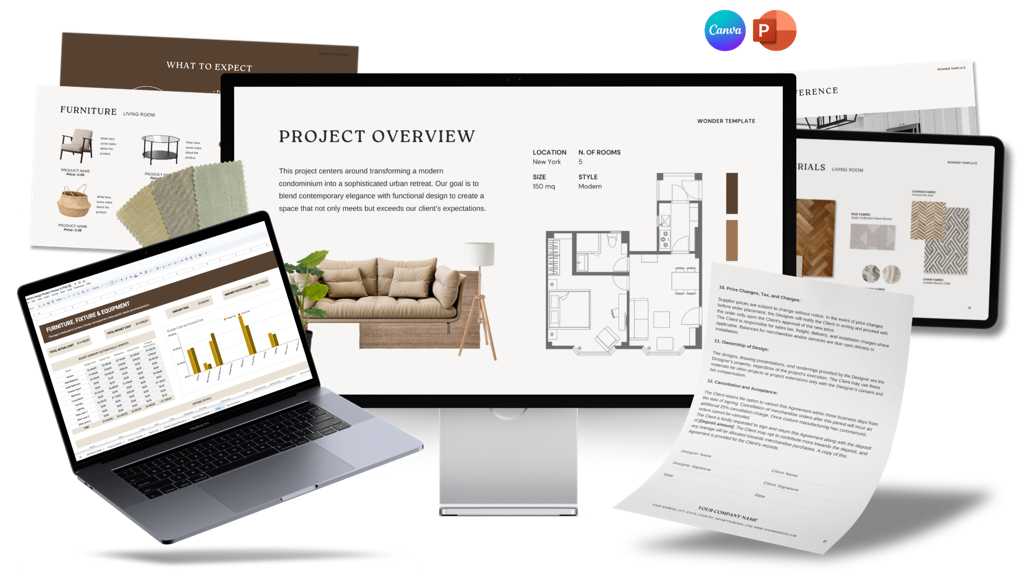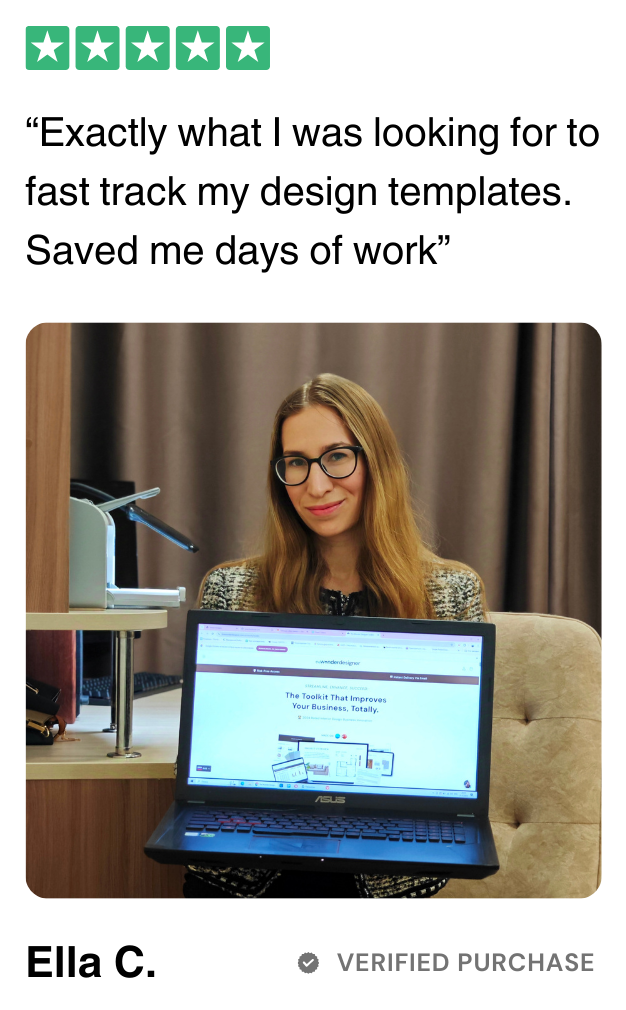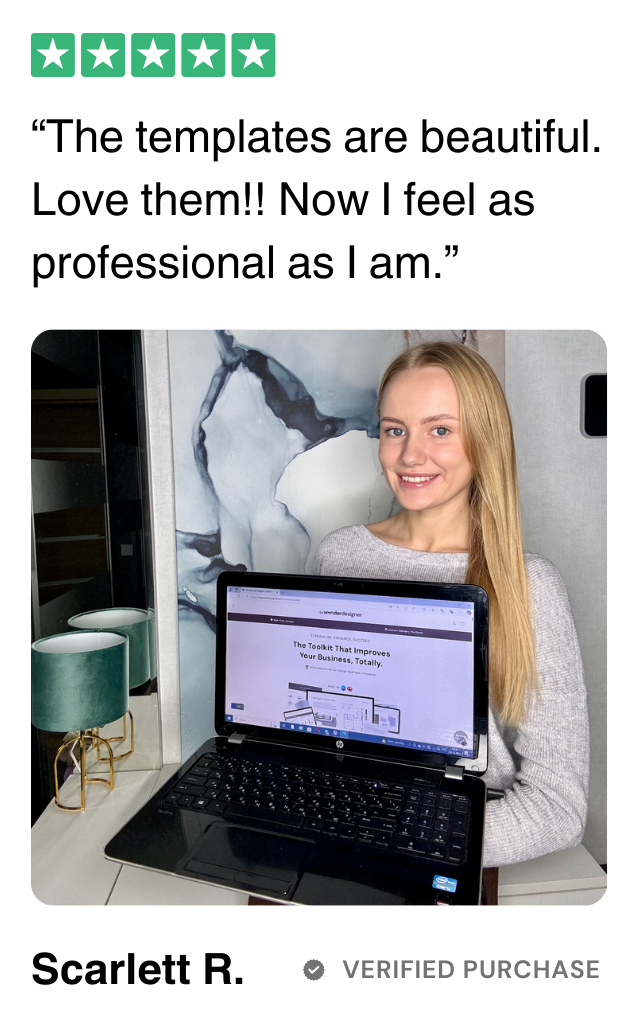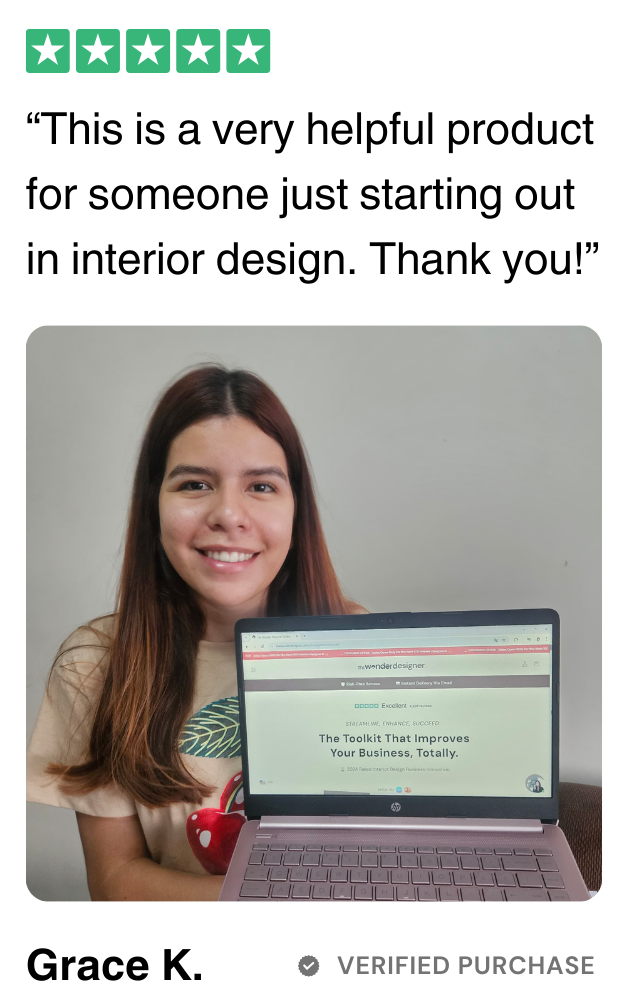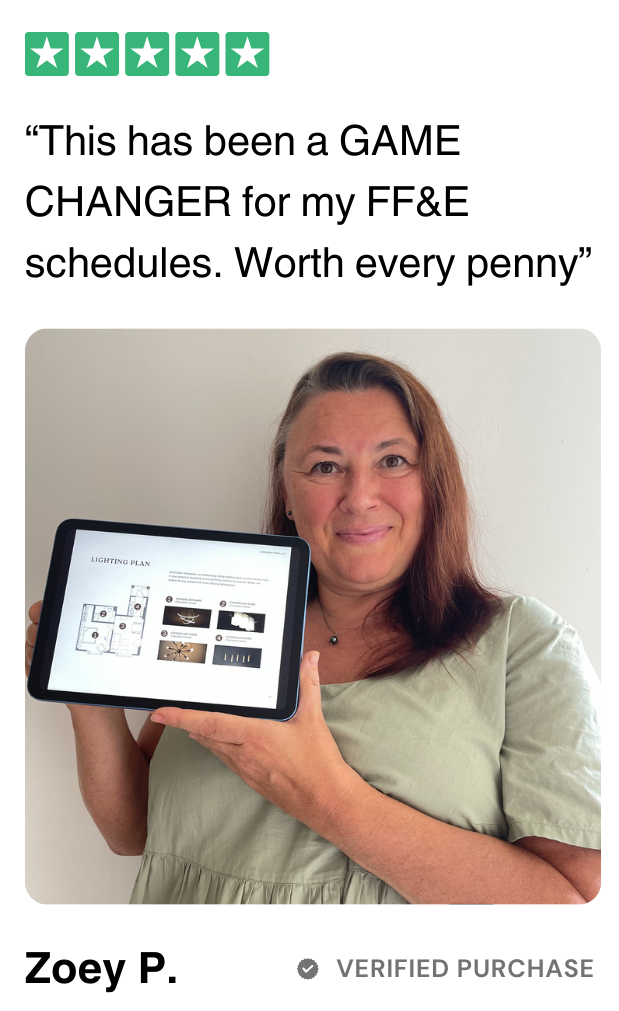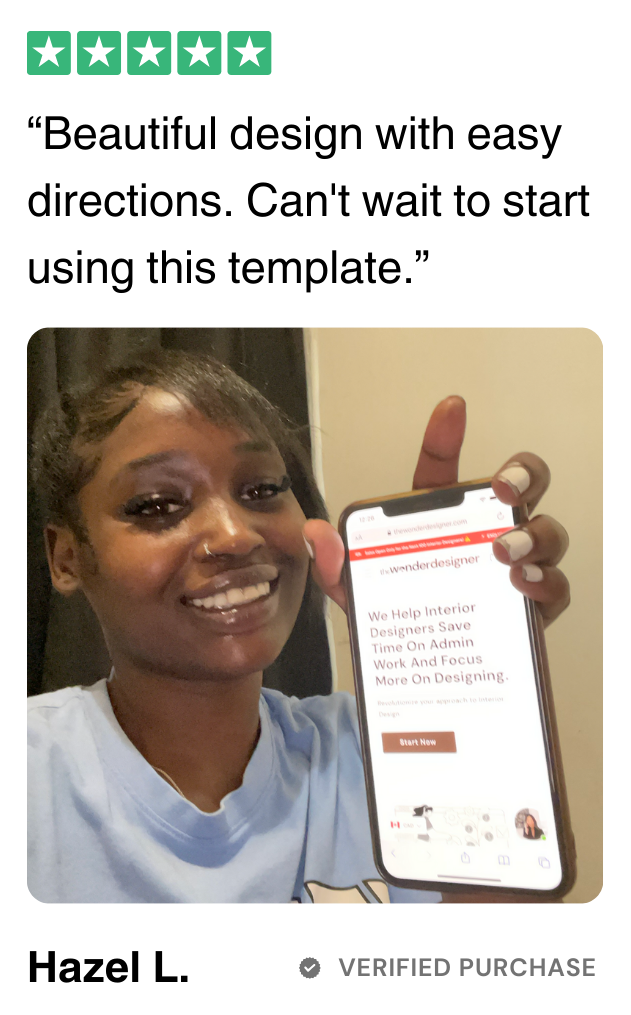Improve First Impression with Clients
by The Wonder Designer - 5 min read

In interior design, the first impression you make with clients can set the tone for your entire working relationship. This initial meeting is your chance to convey professionalism, build trust, and showcase your expertise. When done well, a positive first impression can lead to a successful project and even future referrals. Here’s a guide to making a stellar first impression with your clients in the world of interior design.
Step 1: Preparation is Key
Before meeting a client for the first time, preparation is essential. Take the time to research their style, preferences, and any background information you have about the project. By understanding a bit about their taste or specific design needs, you’ll be able to speak directly to their goals and make the conversation more relevant.
Create a checklist for your initial client meetings that includes:
- Reviewing the client’s questionnaire (if applicable) or initial project brief
- Preparing relevant portfolio examples or case studies
- Identifying any specific questions to ask based on their stated preferences or budget
When clients see that you’ve done your homework, they’re more likely to trust your commitment and attention to detail from the start.
Step 2: Dress Professionally and Arrive on Time
Your appearance and punctuality say a lot about your professionalism. Arrive a few minutes early, and dress in a way that reflects your brand’s style, whether that’s more formal or casually polished. For interior designers, attire should balance creativity and professionalism; you want to communicate both competence and a sense of style.
If you’re meeting virtually, be equally mindful of your setup. Ensure that your background is neat, with good lighting and minimal distractions. A well-organized setting demonstrates your attention to aesthetics and detail, reinforcing the design quality you’re known for.
Step 3: Start with a Warm, Friendly Introduction
First impressions often begin with the energy you bring into the room. Start by introducing yourself with a warm, approachable demeanor, and engage in light conversation to put clients at ease. Small touches, like a genuine smile and direct eye contact, can make a big difference in building initial rapport.
Take a moment to show gratitude for their interest in working with you—this shows humility and enthusiasm, which can go a long way in building mutual respect.
Step 4: Actively Listen and Show Empathy
The first meeting is your chance to understand your client’s vision and concerns. Practice active listening by letting them speak without interrupting, and respond with empathy to their needs, even if they seem uncertain or have high expectations. Use prompts like:
- “What inspired you to pursue this project?”
- “What are the most important aspects of your space for you and your family?”
- “Are there any specific challenges you’d like us to address in the design?”
Listening carefully not only provides valuable insight into their goals but also makes clients feel valued and understood. Repeat back key points they make to show you’re paying attention and to clarify your understanding of their needs.
Step 5: Showcase Your Work Strategically
When discussing your past projects, be selective. Show examples that align closely with the client’s taste, style, or project requirements. Rather than overwhelming them with too many examples, focus on a few select projects that best reflect your ability to meet their unique needs.
For each example, briefly explain your design process and the results you achieved, touching on any challenges you overcame. Clients are often interested in the “why” behind your design choices, so make sure to discuss the thought process that led to the final product.
Step 6: Communicate Your Process Clearly
A smooth, well-outlined design process will put clients at ease and demonstrate your professionalism. Briefly walk them through each phase, from initial concept to project handover, and explain how each step contributes to achieving their vision.
Mention aspects such as:
- Consultation and Concept Development: How you gather and refine their vision
- Project Planning and Design: The importance of thorough planning and detailed design
- Execution and Project Management: Your role in overseeing the implementation and ensuring quality
- Final Styling and Handover: How you add finishing touches and ensure client satisfaction
Use simple, non-technical language, and be open to answering any questions they might have. This clarity helps clients visualize the journey they’ll take with you, building trust and reducing any apprehension.
Making a great first impression as an interior designer involves more than just talking about your skills. It’s about creating a warm, inviting experience that helps clients feel understood, valued, and confident in your abilities. By preparing thoroughly, listening actively, and showcasing your expertise strategically, you can establish a strong foundation for a positive client relationship from the very beginning. When clients leave that first meeting with a sense of trust and excitement, they’re far more likely to embark on their design journey with you, ready to bring their vision to life.

The Wonder Designer Toolkit
What's Included?
First Consultation Guide & Script
Client Questionnaire
Investment Guide
Fee Proposal
Service Contract
Design Presentation
Project Tracker & FF&E
Client Handover
[BONUS #1] Social Media Kit
[BONUS #2] Portfolio
[BONUS #3] Client Welcome Guide
[BONUS #4] Video Tutorials And Lifetime Support


